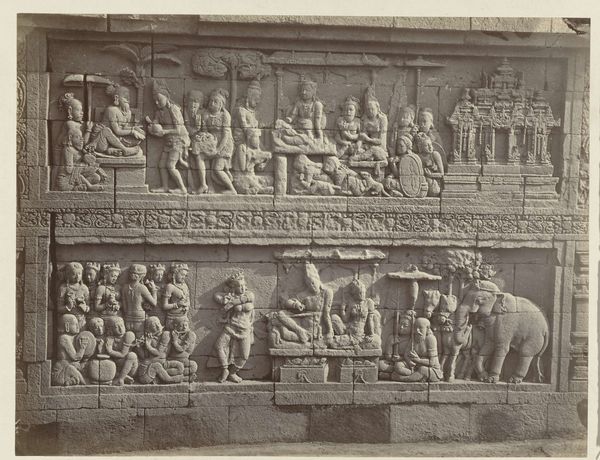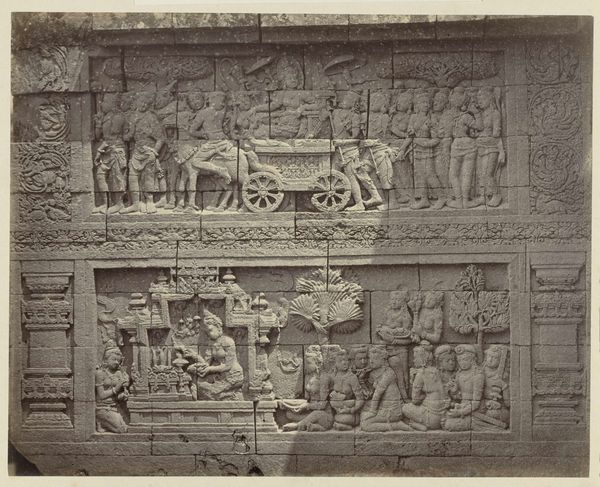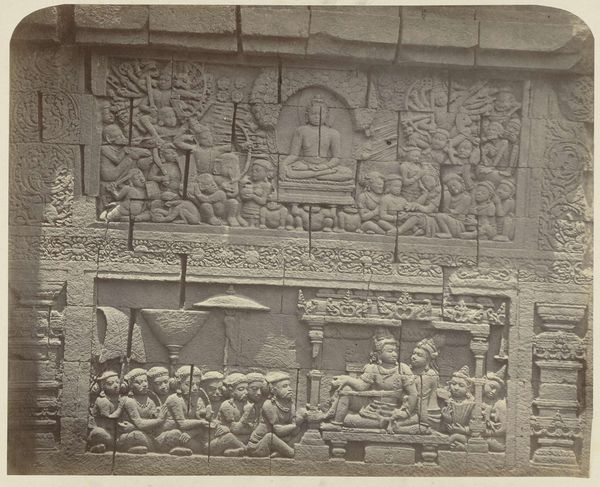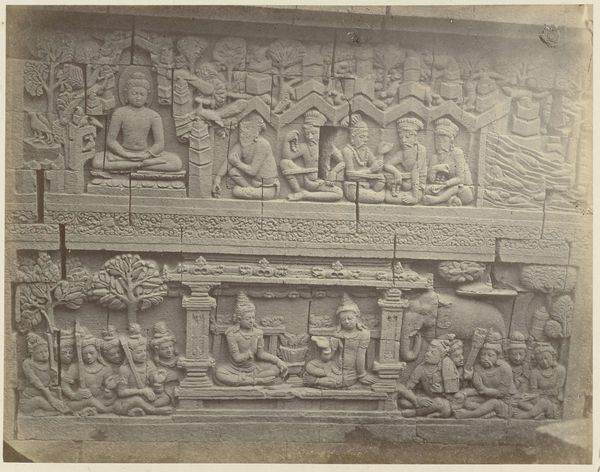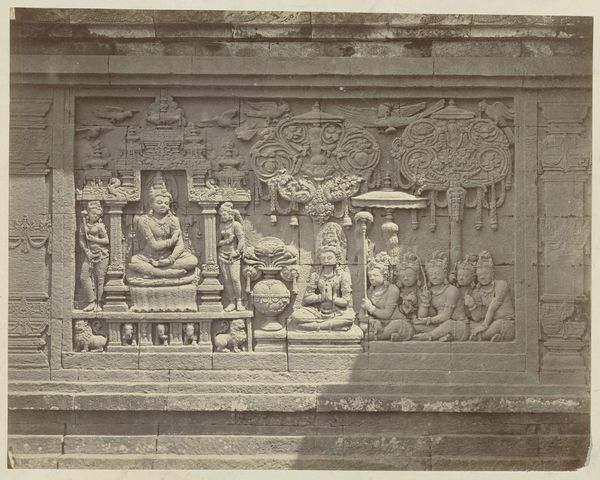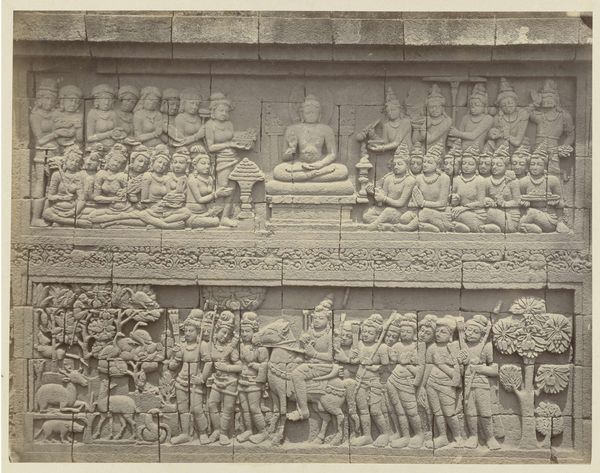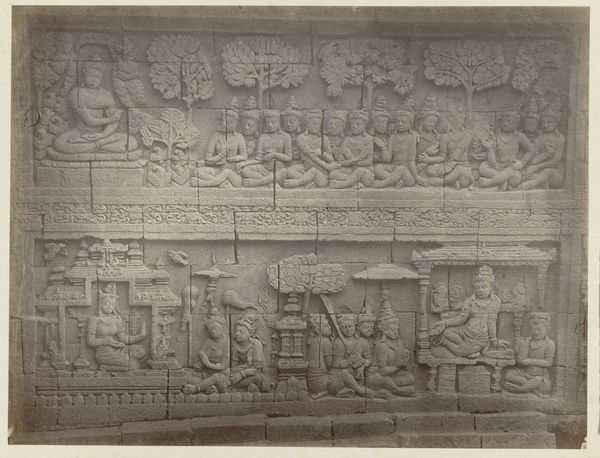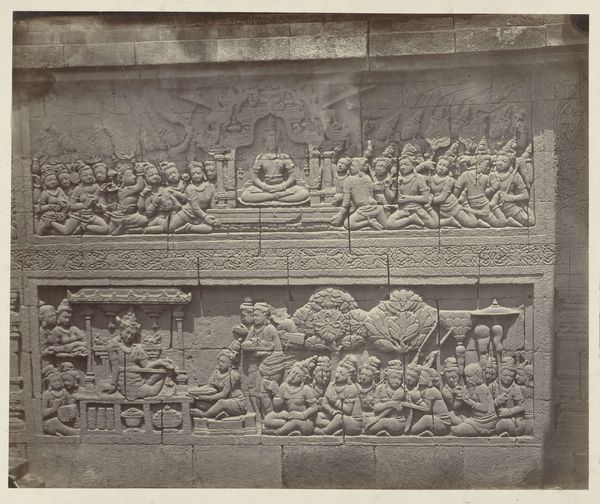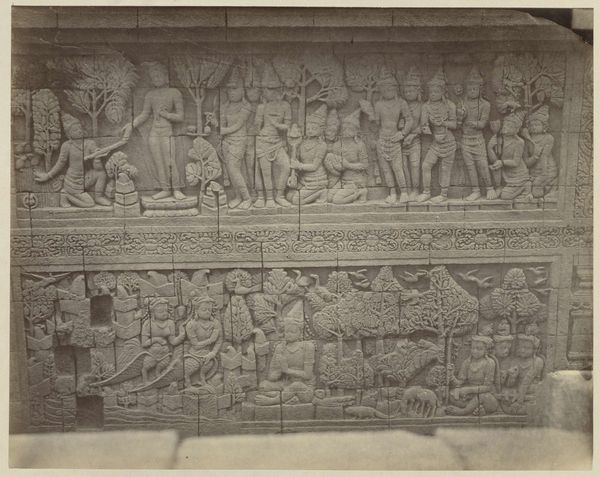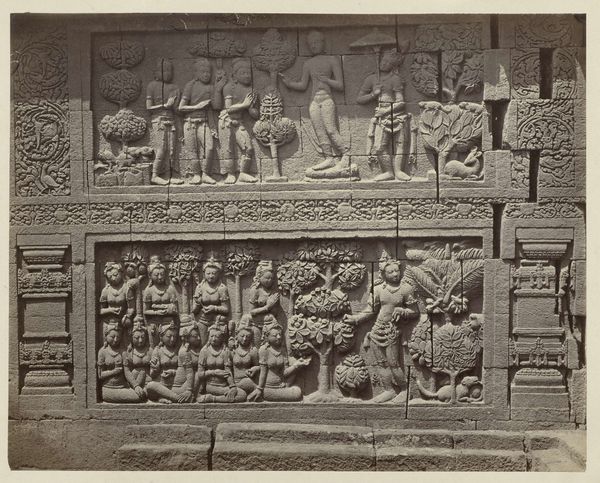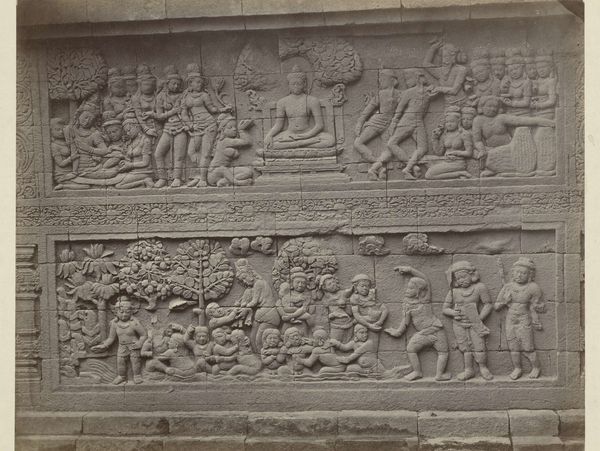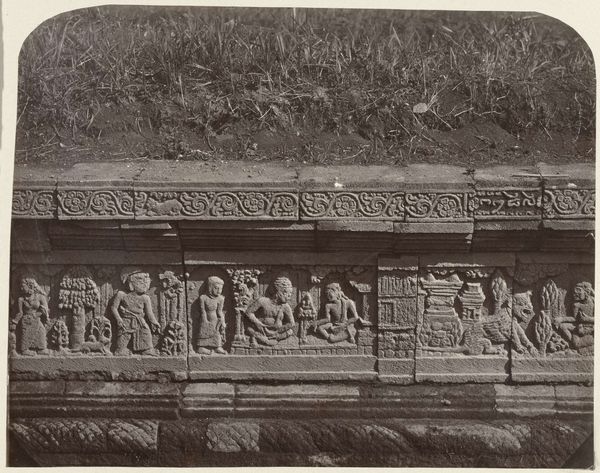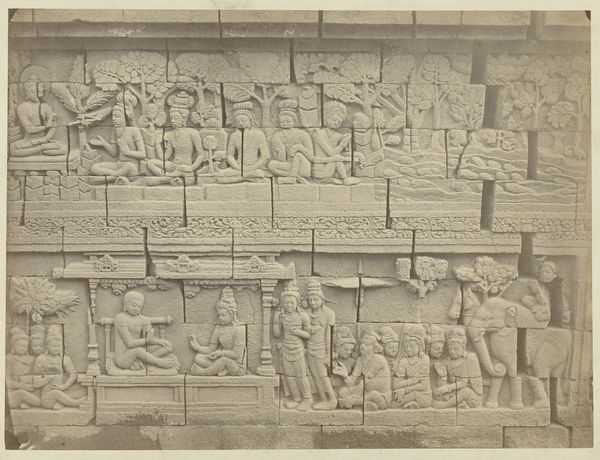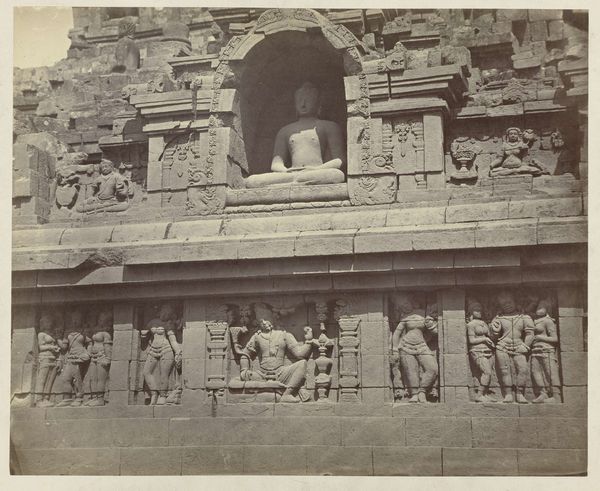
Basreliëf in de muur aan de noordzijde van de Borobudur Possibly 1873 - 1879
0:00
0:00
carving, relief, photography
#
carving
#
narrative-art
#
asian-art
#
relief
#
historic architecture
#
photography
#
carved into stone
Dimensions: height 300 mm, width 400 mm
Copyright: Rijks Museum: Open Domain
Editor: So, this is a photograph by Isidore Kinsbergen, probably taken between 1873 and 1879, depicting a bas-relief on the north side of Borobudur. The intricate carvings look almost like a frozen narrative. How do you interpret this work? Curator: This photograph captures more than just stone; it captures a fragment of cultural memory. The bas-relief itself is part of a visual encyclopedia of Buddhist teachings, and Kinsbergen's photograph preserves a moment in the West's encounter with that world. What details stand out to you, and what stories might they be telling? Editor: I'm struck by how much detail there is, especially in the clothing and gestures of the figures. It makes me think these scenes must be very important. Are there specific symbols or figures that repeat throughout the carvings? Curator: Absolutely. Consider the seated figures, their hand gestures, or mudras. These are not merely decorative; they're symbolic languages used within Buddhism to communicate specific concepts. Certain deities or bodhisattvas might appear, each recognizable through iconographic attributes. Also consider what everyday acts are being presented – what can we tell from this cultural context being presented? Editor: It's amazing how much information can be conveyed through these subtle visual cues! Kinsbergen’s photography gives us an opportunity to decipher these layered stories, and he obviously thought the details were important enough to painstakingly capture it. Curator: Exactly. Think of each figure and scene as a visual echo, resonating with meaning across centuries. These visual cues create bridges across cultures and time itself, speaking volumes about humanity, which Kinsbergen also realized with this detailed rendering. Editor: I hadn't considered it in that way before, but it really changes how you view it when you recognize that everything depicted is culturally significant, as you’ve helped make so clear.
Comments
No comments
Be the first to comment and join the conversation on the ultimate creative platform.
